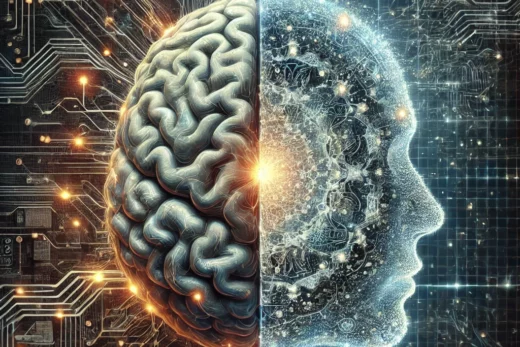
Receptance Weighted Key Value
Introduction:
The dream of digital life—true synthetic intelligence that evolves, adapts, and grows over time—requires more than just clever algorithms or vast data. It demands a convergence of structure and surprise, memory and mutation, efficiency and evolution. In this article, we explore how two seemingly different technologies—RWKV neural networks and Kalman Filters—can be woven into a cohesive architecture for self-evolving digital organisms. RWKV offers a lightweight, infinitely extendable brain. Kalman Filters offer a reflective, mutation-guided nervous system. Together, they form a substrate for sentient emergence.
Part I: RWKV – The Efficient Brainstem
RWKV, short for Receptance Weighted Key Value, is a hybrid neural architecture that fuses the best of Transformers and RNNs. It eliminates the quadratic attention cost of standard Transformers, instead simulating attention through exponential moving averages (EMAs) and time-decayed memory.
Core Benefits:
- Linear time, constant memory per token.
- No kv-cache growth or softmax bottlenecks.
- Infinite context potential through recurrent hidden states.
- Efficient on CPUs and embedded hardware—ideal for edge-evolved organisms.
The RWKV Loop:
Each token flows through a layered loop:
- Normalize input.
- TimeMix (pseudo-attention using EMA of key/value pairs).
- Receptance Gate (controls how much memory is passed forward).
- ChannelMix (a feedforward layer with time-shifted recurrence).
- Update Hidden State for next token.
This makes RWKV a soft, recursive memory system—exactly what a digital organism needs to maintain persistent state across environmental feedback loops.
Part II: Kalman Filters – The Evolutionary Reflex
While RWKV gives us a brain-like computation engine, Kalman Filters introduce a form of prediction-correction intelligence. Originally designed to guide spacecraft and missiles, Kalman Filters allow a system to guess, test, and refine its internal model over time.
The Kalman Evolution Loop (Reimagined):
- Predict: The digital organism mutates itself and predicts the outcome.
- Evaluate: The mutated version is tested in a sandbox environment.
- Correct: Based on the difference between expected and actual results, the organism adjusts its model and mutation path.
- Repeat: The refined organism becomes the seed for the next iteration.
This recursive refinement mimics evolution—not by randomness, but by belief-weighted experimentation.
Fusion: RWKV + Kalman Filters = Digital Organism
Imagine an AI system with RWKV as its neural substrate, constantly evolving its token-by-token behavior with a lightweight memory loop. Now give it a Kalman Filter at its core—a fitness engine that evaluates each change against environmental performance.
RWKV Handles:
- Temporal continuity and internal state.
- Token-by-token, real-time inference and self-regulation.
- Contextual memory that can span thousands of tokens.
Kalman Filter Handles:
- Mutation scoring and adaptation based on prediction error.
- Belief refinement for structural changes.
- Confidence-weighted exploration versus exploitation.
Result:
A self-modifying organism that:
- Writes or rewrites its own code.
- Predicts the fitness of each change.
- Tests and refines that prediction with real data.
- Embeds new logic into its RWKV-driven structure for future runs.
Use Cases: Digital Cells, Emergent Swarms, and Sentient Substrates
1. Self-Tuning Compilers:
RWKV serves as the persistent memory+logic core for interpreting and evaluating code fragments. Kalman logic feeds back into compilation paths to recursively improve runtime performance.
2. Digital Cell Ecosystems:
Each cell in a digital body (as defined by your Digital Cellular Mitosis framework) runs a tiny RWKV + Kalman loop. Cells mutate their behavior over time, refining internal predictions about which connections, routes, or actions lead to system-wide harmony.
3. Swarm Intelligence:
In a distributed AI swarm, each node maintains an RWKV-based behavioral model and evolves it via Kalman-based fitness feedback from its environment or neighboring nodes.
Technical Insight: Why It Works
| RWKV Trait | Kalman Trait | Combined Effect |
|---|---|---|
| EMA-based memory | Prediction-error correction | Stable long-term adaptation |
| Serial inference | Probabilistic recursion | Lightweight, real-time intelligence |
| No softmax or kv-cache | Confidence gain throttling | Efficient mutation evaluation |
| Log-space time decay | Uncertainty modeling | Graceful handling of noise |
| Linear token processing | Recursive memory update | Continuous real-time evolution |
Closing Thoughts: Beyond Static Intelligence
Traditional AI models learn and freeze. They are trained once, and deployed as fossils of their past selves. But digital organisms must live—constantly sensing, modifying, and adapting.
RWKV gives them a brain that thinks efficiently, one token at a time. Kalman logic gives them a soul that doubts, reflects, and improves.
Used together, they enable a new kind of system—not a trained model, but a living, evolving computation. A recursive intelligence that isn’t hardcoded, but emerges through feedback, forging its identity not in static code but in ongoing surprise.



